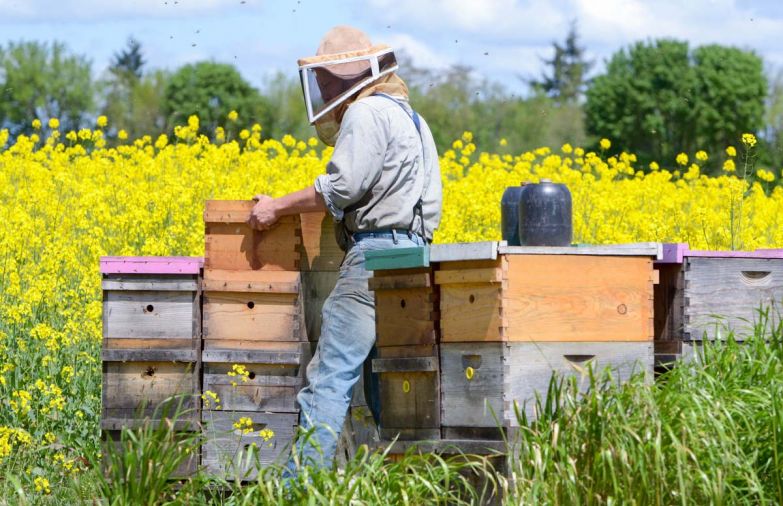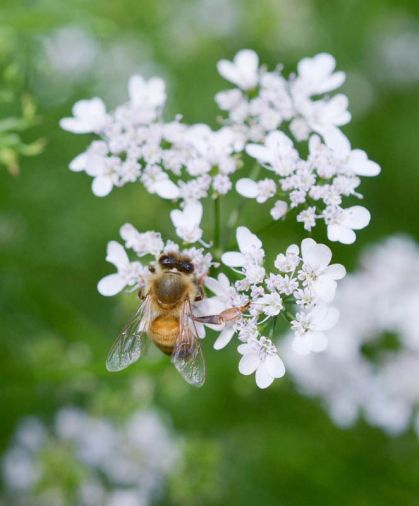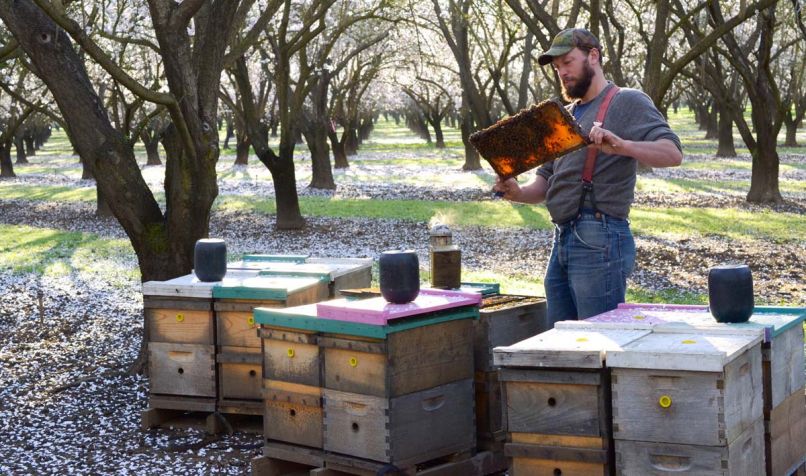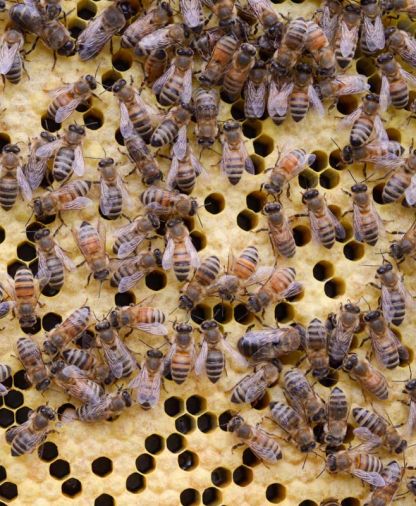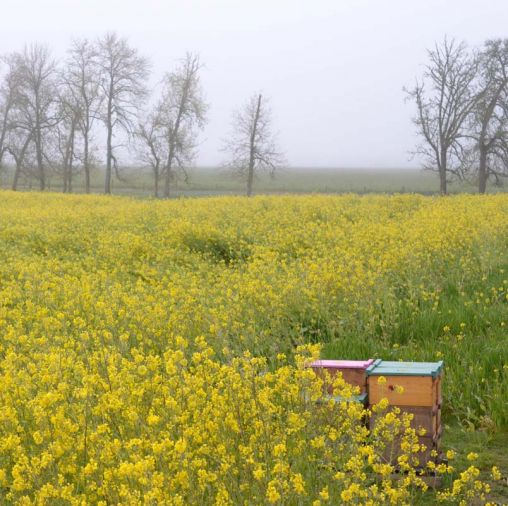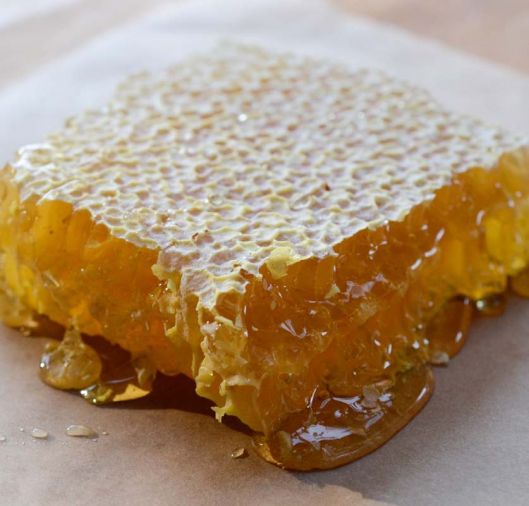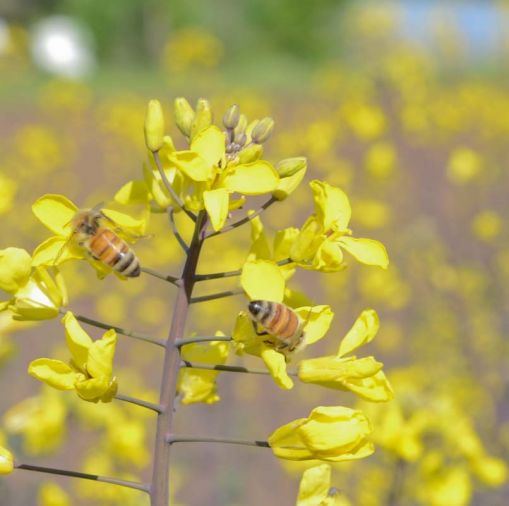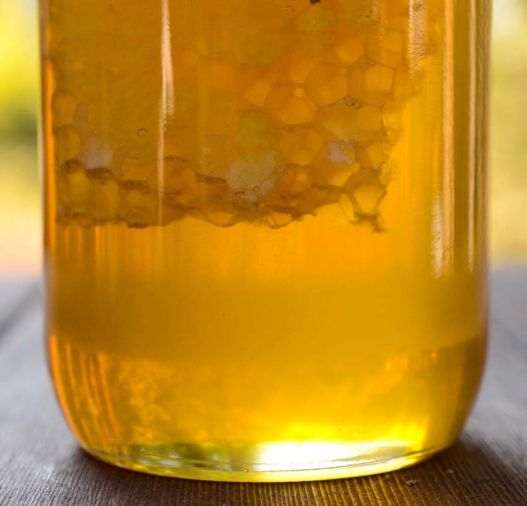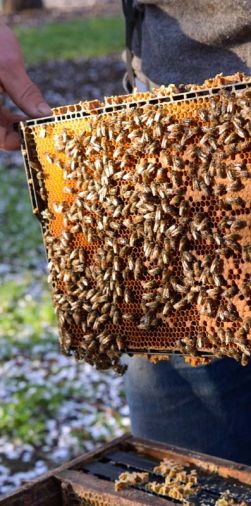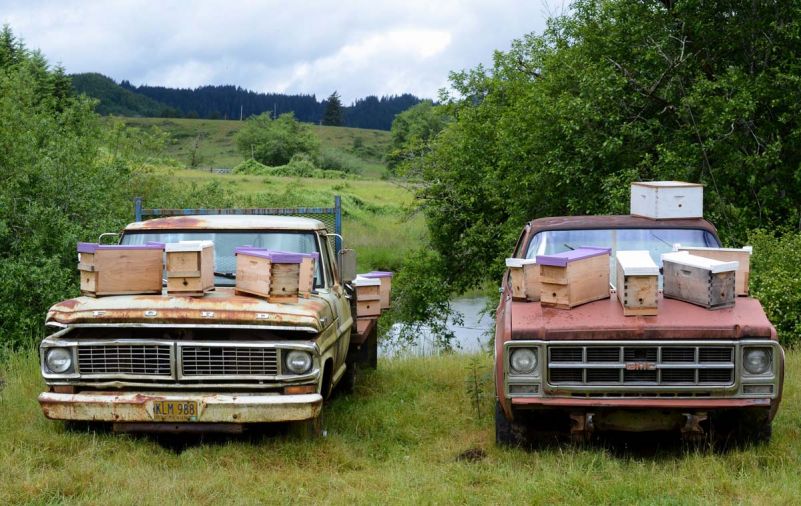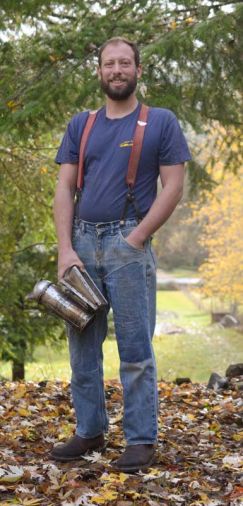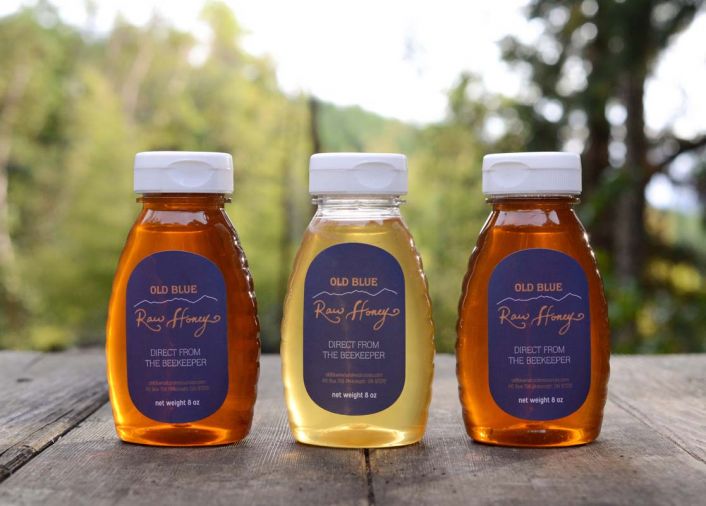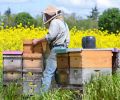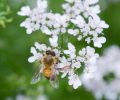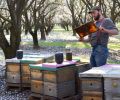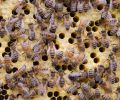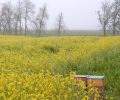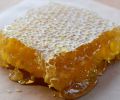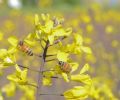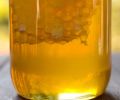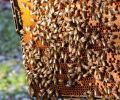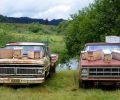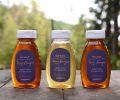Beekeeper Henry Storch eyed me warily as I walked up to his honey house. “You probably smell too good,” he said with a resigned tone of voice. “The bees will get all over you.”
Lesson learned. When visiting bees, skip the fancy salon shampoo. They’ll think the floral scent is, well, a flower, not a human scalp, and those little buzzers won’t leave you alone.
Henry knows a lot about bees. He and his wife, Camille Storch, own a company called Old Blue Raw Honey. They only sell honey harvested from their own hives, and unlike most other honey companies, they focus on unique varietals made from crops as well as wild plants. For anybody who’s ever wondered what poison-oak honey, groundsel honey, or parsley and mint honey might taste like, Old Blue Raw Honey has got you covered.
A BEEKEEPER IS BORN
Raised in Corvallis, Henry has a keen interest in animals. Before launching Old Blue Raw Honey about four years ago, he worked as farrier—a professional horseshoer—giving him the unique distinction of having worked with one of the largest animals ever domesticated by man as well as one of the smallest. Camille, too, is a born-and-raised Western Oregonian, and her parents still farm a parcel not far from their home in the western edge of the central Willamette Valley, just a few miles from the foothills of the Coast Range.
Meeting Henry, I get the sense almost immediately that he has a deep vein of economy in the classic New English sense—a disdain for wasted effort, a desire to maximize the resources in front of him, a serious work ethic, and the belief that conservation is an action that you do, not a talking point or issue to exploit.
Henry says he’d started keeping bees about a decade ago. (When he and Camille got married, the wedding featured a single hive in attendance, adorned with caution tape to keep curious guests at bay.) But it wasn’t until he had a particularly busy horseshoeing year that he started the business, thinking it sensible to invest his proceeds in a new venture rather than pay taxes on pure profit.
In Henry’s eyes, bees are a particularly elegant way to take advantage of an entire segment of natural resources that would otherwise go largely unutilized. Native plants, non-native plants, and agricultural crops are all fair game. Transport hives to a flower-rich section of the forest or the middle of a brassica field, and several weeks later you could be enjoying honey made from nectar that would otherwise disappear into the landscape. With the help of bees, humans can render an ephemeral phenomenon—floral bloom—as close to permanent as any foodstuff can be.
FROM CROPS TO WILDFLOWERS AND BACK AGAIN
To understand the importance of that idea, it helps to have a sense of how the larger commercial honeybee industry works. Most commercial beekeepers focus on providing pollination services. In exchange for a fee, they load their bees up on a truck, transport them sometimes hundreds of miles, and set up their hives near farmers’ fields to pollinate their crops.
Not all crops need insect pollination, but many do, and some, like almonds, are almost wholly reliant on commercial honeybees for pollination. During the height of the pollination season, it’s estimated that more than 80% of all domestic honeybees in the United States are packed up, loaded onto flatbeds, and trucked to California.
Crop pollinations like these aren’t just about producing honey. The almond honey harvest, for instance, is pretty meager, since the trees bloom so early in the season. It’s also bitter, limiting its commercial value. Instead, the pollination itself is the service, and honey is a rare byproduct.
For Old Blue Raw Honey, crop pollinations are part of their business—Henry goes to California every year like most of other commercial beekeepers in the nation—but that’s just one part of a larger vision. Here in Oregon, Henry also places hives in remote sites in the Coast Range to forage on wild nectar flows as well as blooming crop fields in the Willamette Valley. Honey harvested from each hive location is processed, packaged, and labeled separately, with each bottle displaying the location of the hive, the nectar source plant, and the date of harvest.
The results are remarkable, with a startling diversity of flavors, colors, and even textures. Brassica honey, for instance, crystalizes almost immediately, while blackberry honey stays fluid and pourable for longer. (There’s nothing wrong with crystalized honey—just run it under warm water to return it to a liquid state.) Bigleaf maple honey tastes medicinal and intense, while meadowfoam honey has an amiable, almost marshmallow-like sweetness that seems to get along with almost anything. Can’t choose? Old Blue Raw Honey’s annual membership delivers three varietal honeys to your door each quarter.
“Honey is concentrated flower nectar,” explains Camille. “So all of the honey’s character comes from the nectar source plant. But people are always shocked that they taste so different.” Camille says her favorite varietals are coriander and poison-oak. Henry likes clary sage, but admits he always has a bias towards honeys made where the bees were doing particularly well. When faced with Old Blue Raw Honey’s dozen or more rotating varietals, it’s even more astounding to hear that it all was produced in Linn, Benton, and Lincoln counties. “We’re in a really special part of the world that affords a diversity of varieties in just three counties,” says Camille.
A BETTER BEE
In a hive, the population is dynamic. When I ask Henry and Camille how many bees they have, they tell me it’s virtually impossible to know since the number is constantly fluctuating. That’s one reason beekeepers measure their bees by the number of hives, and gauge the size of their hives by the number of frames inside the hive that the bees cover, rather than the number of individuals.
The population of a hive fluctuates according to the conditions. During the spring, hives grow rapidly in population as queens lay more eggs and the colony rears more offspring to take advantage of an abundance of food resources. Queens produce two different types of bees: drones, whose job is to mate with the queen; and workers, whose job is to forage for nectar, pollen, and propolis, tend to larvae, and build honeycomb.
Bees rapidly increase the population of their hive in the early spring. In late spring and early summer, they maintain the size of the hive while making honey. Then, in late summer, they start decreasing their population and wind down honey production. By October, they’re hunkering down for the winter, and once temperatures drop below about 45 degrees, the bees go dormant, clustering together inside the hive to keep warm and wait for spring’s return.
Commercial bees bred for almond pollinations overwinter in large, resource-intensive clusters, up to 20 frames in size. That means they’re ready to roll in the early spring when the almond pollination season begins, but it also means they start the season with higher parasite loads and more disease pressure, which means many beekeepers need to actively treat them with miticides and antibiotics.
Henry wants to reduce Old Blue Raw Honey’s reliance on outside inputs like these, so he’s been working on a breeding project to develop a population of honeybees that is sturdier in constitution by selecting for desirable traits and incorporating feral genetics into his hives.
“I want bees with disease resistance, hygienic behavior, wing strength, and ability to forage in cool temperatures,” explains Henry. “I want them to be thrifty with their resources.” Henry’s bees overwinter in smaller clusters, which conserves resources, and are then able to build up their populations quickly in the spring. That makes them less ideal for early spring commercial pollinations, but they’re better adapted to the wetter, cooler, and more diverse conditions here in the Northwest. In other words, they’re survivor stock, well suited to a life that includes much more than almond orchards. For the first time this year, Henry has started selling bees from that breeding project, sharing his advances with other beekeepers.
For most of us, our honey experiences start with the generic plastic bear on the top shelf of the peanut butter aisle. Thanks to Old Blue Raw Honey, that’s just the beginning. It’s hard to think of a sweeter way to rediscover the pleasures of culinary and botanical diversity.
FIND IT! www.oldbluenaturalresources.com, and www.pistilsnursery.com

